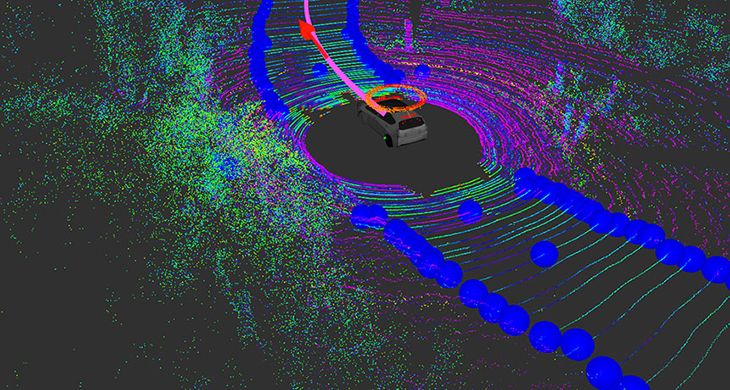Getting road-trip ready, and no driver needed
New navigation system for self-driving cars uses laser sensors to ‘see’ its path

Laser sensors help a new type of driverless car stay on the road, even without detailed maps.
vvvita/iStockphoto
A new kind of navigation system could help self-driving cars hit the road and get out of town.
Cars that do not need a human driver are called autonomous (Aw-TAAH-nuh-muss). Controlled by computers, they navigate using detailed 3-D maps. Some companies are testing such cars in big cities. They use maps marking every curbside and off-ramp with almost centimeter-level precision. But few places have been mapped in such detail. The places that have not include smaller cities, towns and millions of miles of open road. That has left most areas off-limits to driverless cars. But not for long, if some researchers have their way.
Researchers at the Massachusetts Institute of Technology (MIT) in Cambridge asked: What if self-driving vehicles could get around another way? Intrigued by the challenge, they developed a new navigation system to guide autonomous vehicles without such detailed maps. This tech could help driverless cars drive almost anywhere.
The MIT team described its new system May 22 at the IEEE International Conference on Robotics and Automation in Brisbane, Australia.
The new system charts a course down unfamiliar roads much as a human driver would. It continually scans its surroundings to gauge how close it is to the edges of the road. Instead of human eyes, it uses a laser sensor. At the same time, the car follows GPS directions to its destination from a tool like a mapping app. Along the way, it notes traffic rules. These may include speed limits and the where stoplights exist.
Story continues below image.

The MIT team test-drove a car equipped with this system on a one-lane road. The road wound through a forest in Devens, Mass. This remote location lacks those detailed maps, so other driverless cars would be lost here. The vehicle slowly cruised along a 1 kilometer (roughly half-mile) stretch of road without needing any human assistance. The researchers plan to build a version of this system to also spot lane markings painted on streets. That would allow the car to drive on roads with more lanes, Ort says.
Right now, the new system assumes that a car has a clear path down the road, notes Teddy Ort. He’s a roboticist at MIT who worked on the new system. But the new system could be paired with other computer programs that can sense obstacles. These might use lasers to detect in-road objects such as other vehicles or pedestrians. That should help the car navigate roads with heavier traffic.
The technology might be useful for future self-driving cars on cross-country road trips, says Raghvendra Cowlagi. This mechanical engineer at Worcester Polytechnic Institute, or WPI, in Massachusetts. Still, he warns, for weaving through city traffic even these vehicles would probably still need meticulous 3-D maps.
Alexander Wyglinski is an electrical and computer engineer at WPI. And like Cowlagi, he did not work on the new system. The new system may need other kinds of sensors to work in less than ideal conditions, he suspects. Laser sensors don’t work well in rain or snow, for instance. So these cars might need other technologies to navigate safely in bad weather.







